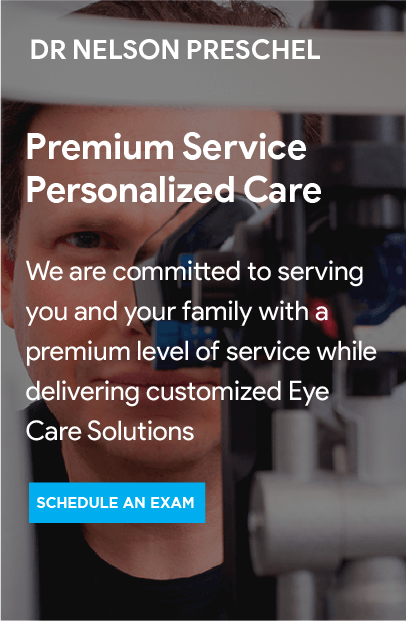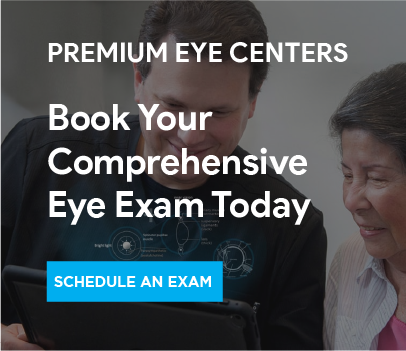The area of medicine known as ophthalmology is dedicated to the research and care of conditions affecting the eyes and the visual system. This broad area of medicine continues to be at the forefront of innovation, constantly tackling numerous difficulties and constraints to enhance the quality of life for patients.
New Technologies that Would Revolutionize Eye Care
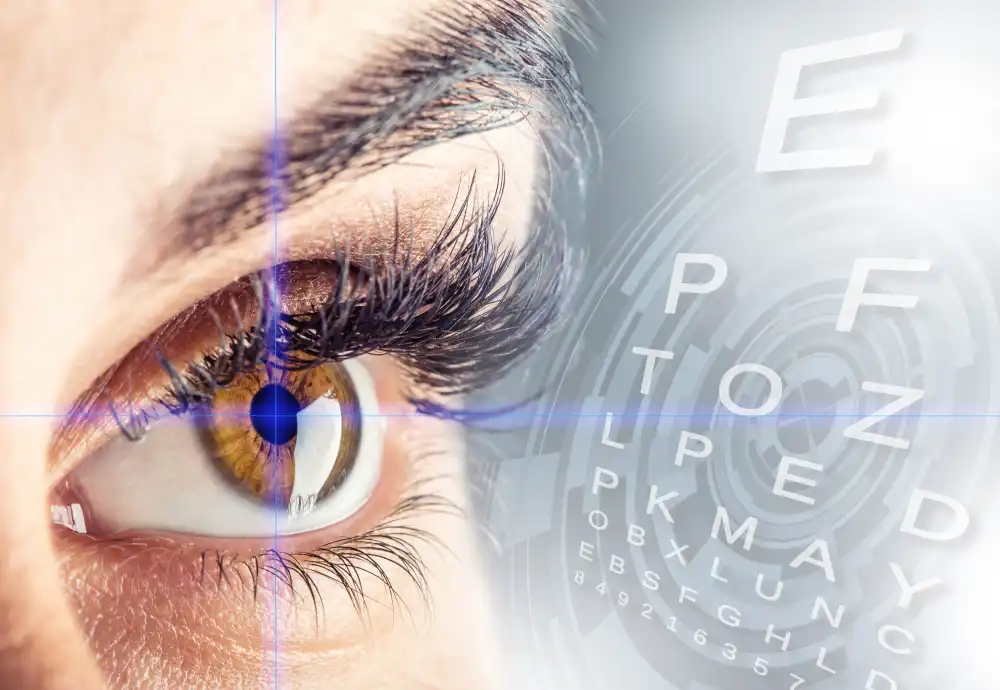
With millions of individuals affected globally, eye problems are a serious public health concern. At least 1 billion of the projected 2.2 billion individuals who have visual impairment or blindness, according to the World Health Organization (WHO), may be prevented or treated. Additionally, an aging population and factors connected to lifestyle are predicted to cause a rise in the prevalence of visual impairment globally in the upcoming years. Leading pharmaceutical businesses including Alcon, Bausch & Lomb, Essilor, and Zeiss are actively participating in the development of cutting-edge medicines for common eye diseases like age-related macular degeneration (AMD), cataract, and glaucoma in response to this expanding demand.
In ophthalmology, recent years have seen developments in Artificial Intelligence (AI) and Extended Reality. These innovative techniques help with surgical operations, promote individualized treatment regimens, and enable more precise and effective diagnostics of eye illnesses. In what follows, we will look into the topic of ophthalmology and examine its development through time, obstacles to the adoption of AI and other ground-breaking innovations, and future possibilities.
Ancient Roots to Technological Advances in Ophthalmology
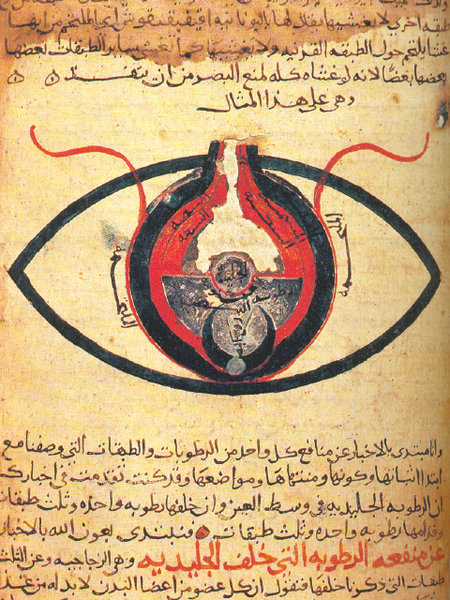
The research and treatment of eye illnesses have a long history. For example, references to eye diseases may be found in historical documents such as the Ebers Papyrus from ancient Egypt and the Code of Hammurabi (2250 BC) from ancient Babylon. Since then, there have been tremendous developments in the detection and treatment of eye diseases.
The anatomical idea of the eye was mostly speculative in the pre-Hippocratic era that followed. Alcmaeon of Croton, a well-known philosopher-physician of that era (540–500 BC), is said to have been the first to investigate and categorize the human eye. The Hippocratic Corpus, a collection of more than 60 early ancient Greek medical texts by Hippocrates (460-375 BC), further expanded Alcmaeon of Croton’s views.
Sushruta, a renowned medical practitioner from ancient India around the fifth century BC, is often hailed as the pioneer of Indian eye care. His seminal work, the “Sushruta Samhita,” ends with a section known as the Uttara Tantra, detailing 76 eye-related ailments. These include conditions analogous to trichiasis, uveitis, cataract, and glaucoma, named in his text as Pakshma-kopa, Adhi-mantha, Kacha, and Gambhirika respectively.
In the 14th century, Europe underwent a significant transformation known as the Renaissance, a period characterized by a profound resurgence in scientific exploration, artistic creativity, and political thought. As a reflection of the increasing specialization in medical disciplines during this vibrant epoch, physicians who focused on the intricate world of eye care started to be identified as “oculists”. This nomenclature can be traced back to the Latin origin, “oculus”, which translates to ‘eye’.
Fast forward to the 20th century, another monumental stride was made in the realm of ophthalmology. The year 1911 saw the conceptualization and realization of the slit lamp. This innovative instrument was the brainchild of Carl Zeiss, a renowned German optician whose legacy spans from 1816 to 1888, and Allvar Gullstrand, a distinguished Swedish ophthalmologist with a life timeline from 1862 to 1930. Their collaborative genius incorporated the cutting-edge Nernst electric bulb technology of the time. The resulting slit lamp offered a transformative leap for practical ophthalmologists. By casting a slender beam of light into the eye, the device rendered a magnified and illuminated perspective of the eye’s intricate structures. This enhancement not only revolutionized the visualization capabilities of eye specialists but also bolstered their capacity to pinpoint, diagnose, and address a plethora of eye-related conditions with unprecedented precision.
During the 20th century, the realm of cataract surgery witnessed remarkable advancements, largely credited to the groundbreaking work of visionaries like Sir Harold Ridley (1906-2001) and Charles Kelman (1930-2004). Their contributions marked the onset of a golden era for this specific surgical specialty.
In the following years, the broader field of ophthalmology saw an influx of transformative technological developments. These innovations expanded the horizons of eye care, ushering in an era of enhanced treatments and heightened patient outcomes on a global scale. One of the most profound evolutions has been the integration of Artificial Intelligence (AI) into medical practices. From the inception of the first robotic arm for industrial purposes to the development of natural language processing tools and AI-driven decision-support mechanisms, the journey of AI in medicine has been both intriguing and challenging.
However, it’s noteworthy to mention the phase between 1970 and 2000, often dubbed the “AI winter.” During these years, the progression of AI encountered substantial skepticism. Factors such as exorbitant costs and technical obstacles stifled its growth and led to a period of stagnation. But, as with all winters, there was a thaw. Recent times have seen a rejuvenation of AI within ophthalmology. This revival is rooted in significant enhancements in computing capabilities, sophisticated learning methodologies, and the access to extensive data repositories. This confluence of factors promises a bright future for AI’s role in ocular medicine.
Emerging AI Innovations in Eye Care
The realm of eye care has witnessed a flurry of innovations in recent times, setting new paradigms in the diagnosis, management, and overall treatment of visual disorders. This article delves into several seminal innovations that are redefining the contours of contemporary ophthalmology. Standing at the cusp of cutting-edge technologies, ophthalmology now embraces everything from next-generation implantable intraocular lenses to the integration of AI in continuous patient evaluation and diagnostics. The horizon is further broadened with innovations like 3D printed corneal replacements and the game-changing implications of the metaverse and extended reality in eye care. Additionally, the advent of bionic ocular implants, paired with the growing prevalence of teleophthalmology, fills previously existing gaps in the sector, leading to marked enhancements in visual clarity and the democratization of ocular care services. A deeper insight into each of these pioneering strides is provided in the subsequent sections.
Implantable Intraocular Lenses: Enhancing Vision through Cataract Surgery and Refractive Lens Procedures
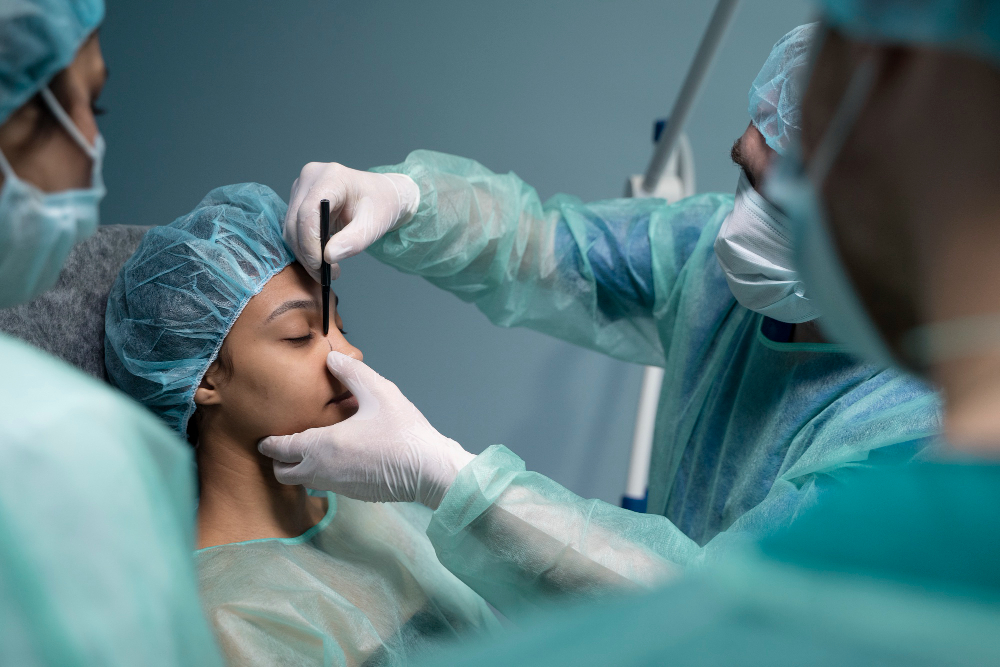
The world of ocular treatment has been significantly revolutionized by the introduction of the intraocular lens (IOL). Designed to be surgically positioned within the eye, IOLs serve as pivotal solutions for cataract management and correction of refractive errors, such as myopia and hyperopia.
One of the chief advantages of IOLs is their capacity to provide tailored vision rectification, allowing patients to experience improved and often crystal-clear sight. A leading-edge innovation heralding from the research corridors of POSTECH stands out: a pioneering contact lens that marries an intraocular pressure (IOP) sensor with an adaptive drug delivery module. This singular lens promises not just the precision of IOP readings but also the facility of administering required medications, amalgamating two critical functionalities into one device.
To appreciate the breadth and potential of IOL advancements, it’s essential to delve into the categories they encompass:
Multifocal and Extended Depth of Focus Lenses: These IOLs cater to multiple vision ranges, ensuring clarity across varying distances, thereby minimizing the need for additional corrective aids.
Light-adjustable Lenses: A marvel in adaptability, these lenses can be fine-tuned post-surgery using specialized light treatments, offering a customizable vision solution.
Accommodative Intraocular Lenses: Crafted to mimic the eye’s natural lens movement, these IOLs adjust based on the eye’s effort, providing a more dynamic range of focus.
Phakic Intraocular Lenses: Designed for individuals whose natural lenses remain intact, these IOLs supplement the existing lens to correct significant refractive errors.
Smart IOLs: Merging technology with biology, these lenses are equipped with sensors and other advanced features, pointing to the future of interactive and responsive eye care.
The strides made in the domain of IOLs not only attest to the rapid progress in ophthalmic technology but also underline the promise of enhanced vision and improved ocular health for countless individuals across the globe.
Leveraging Artificial Intelligence for Enhanced Ocular Care: Diagnostics and Patient Monitoring
The profound impact of Artificial Intelligence (AI) on modern healthcare is evident across various medical domains, with ophthalmology being no exception. In the specific realms of ocular diagnostics and teleophthalmology, AI’s influence is both transformative and expansive.
By harnessing the power of AI-driven algorithms, eye specialists are now equipped with more precise tools to diagnose and manage a diverse spectrum of eye disorders. This not only paves the way for superior treatment outcomes but also democratizes access to top-tier ocular care, bridging geographical and logistical barriers.
Several eye conditions, such as diabetic retinopathy, age-related macular degeneration (AMD), and glaucoma, have benefitted from the incorporation of AI in their diagnostic processes. These algorithms, adept at combing through vast sets of ophthalmic imagery, are remarkably proficient at discerning even the minutest indications of these disorders. Such early detection is pivotal, as timely interventions can arrest the progression of these diseases, preserving vision and enhancing quality of life.
In the corporate arena, giants like Samsung are already recognizing the potential of AI in revolutionizing eye care. Their collaboration with an Orlando-based tech firm to infuse their display systems with the AI-Powered Smart Care Facility Platform is a testament to this commitment. Samsung’s strategic move seeks to supercharge patient monitoring within the ocular sector, by embedding AI-driven features directly into their interface.
As AI continues its ascendancy in the medical field, its role in ophthalmology—whether it’s through sharper diagnostics, enriched patient monitoring, or pioneering telemedicine solutions—promises a future where eye care is more accessible, efficient, and effective.
3D Printing and the Future of Corneal Transplants
3D printing, with its promise to revolutionize medicine, has made notable strides in ophthalmology, particularly in the realm of corneal transplants. At its essence, a 3D-printed cornea is an amalgamation of biocompatible materials that are reminiscent of human corneal tissue, offering a natural solution devoid of any animal-based residues.
The prowess of 3D printing is being harnessed by scientists to construct intricate corneal stroma frameworks using materials that are amicable to the human body. While preliminary findings depict an optimistic picture in terms of these structures melding seamlessly with biological tissue, the true litmus test lies in more extensive animal and human trials to validate their potential and safety.
Adding a feather to the cap of this groundbreaking endeavor are Indian researchers who have taken commendable leaps in this arena. A notable achievement was the successful transplantation of a 3D-printed artificial cornea into a rabbit’s eye, marking a significant step forward in the validation of this technology. Furthering this narrative of innovation, a synergistic collaboration between IIT Hyderabad, L V Prasad Eye Institute, and the Center for Cellular and Molecular Biology resulted in the creation of a 3D-printed cornea synthesized from human donor corneal tissue. Such advancements hold immense potential for addressing ocular conditions like Corneal Scarring or the debilitating Keratoconus.
The Convergence of Metaverse, Extended Reality, and Ophthalmology
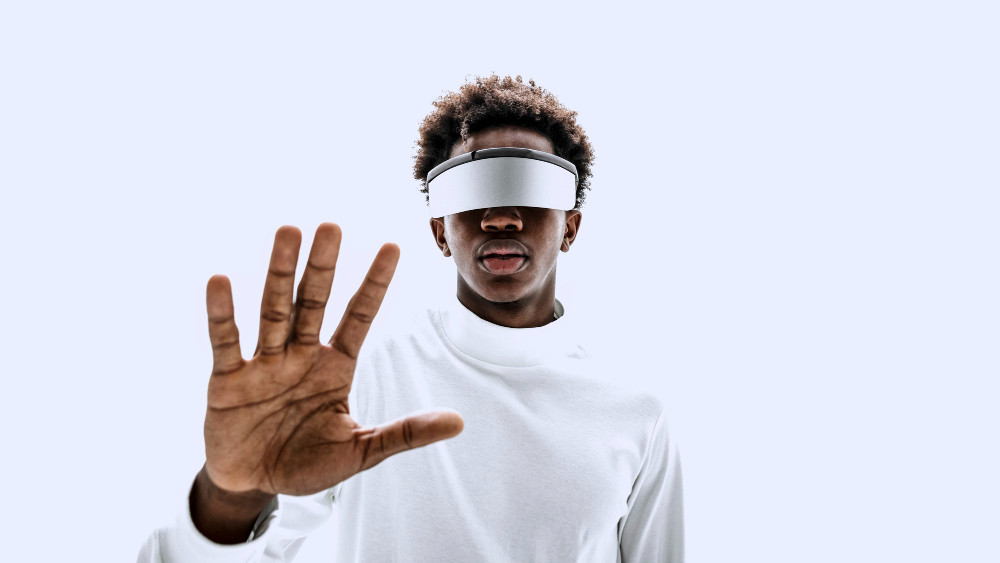
The rise of the “Metaverse” – envisioned as a collective virtual shared space, birthed from the fusion of augmented, virtual, and physical realities – is reshaping the landscape of numerous industries, with ophthalmology being no exception. Through the lens of Virtual Reality (VR) and Augmented Reality (AR) headsets, the Metaverse ushers in an immersive dimension to the internet, crafting a unified and holistic virtual cosmos.
For the world of eye care, the implications of the Metaverse are vast and varied. Avatars, the digital personas within this space, are instrumental in facilitating life-like consultations, fostering deeper engagements and interactions. Beyond this, the intricate web of interconnected data within the Metaverse promises tailored care models, accentuating the personalization aspect of patient treatment.
The educational facet of ophthalmology also stands to gain immensely. The Metaverse provides an avant-garde platform for remote medical instruction and hands-on training, forging new horizons for knowledge dissemination and honing of medical expertise.
Venturing into the specifics of diagnostics, extended reality proves to be a game-changer. It deftly displays intricate ocular imagery and meticulously assesses visual functions. Furthermore, its prowess is felt in the spheres of surgical strategizing and interventions, especially for conditions such as amblyopia and diminished vision.
Highlighting the symbiosis of these technologies and ophthalmology, enterprises like Varjo, renowned for crafting high-caliber VR/XR solutions, and machineMD, a pioneering medical device entity from Switzerland, are converging. Their collaborative brainstorming revolves around ‘Neos’ – a groundbreaking VR-integrated eye-tracking apparatus with the ambition of assisting medical professionals in pinpointing neural anomalies.
The Dawn of Bionic Vision: Retinal Prostheses and Beyond
Bionic eye implants, commonly referred to as retinal prostheses, herald a new era in the realm of vision restoration. Crafted with the intent of reinstating sight for those grappling with severe vision impairments or outright blindness, this groundbreaking technology bridges the gap between the visual world and those detached from it.
At the heart of a bionic eye lies a sophisticated system that ingeniously mimics the natural visual process. The modus operandi begins with a camera that seizes visual data from the surroundings. This captured information is then relayed to a processor that translates these visual cues into electrical signals. Culminating the process, an electrode array transmits these impulses to the remaining functional retinal cells or the optic nerve, rekindling the sensation of sight. The resultant artificial vision, while not akin to natural sight, bestows users with the capacity to discern light, discern shapes, and detect motion, paving the way for renewed autonomy and a semblance of visual interaction with their environment.
In the arena of visual prosthetics, ‘Science Corp.’ stands out with its avant-garde venture, the “Science Eye.” This state-of-the-art apparatus marries cutting-edge electronics with the transformative potential of gene therapy. Its ambition extends to offering hope to those afflicted with conditions such as retinitis pigmentosa and dry age-related macular degeneration.
Teleophthalmology: Bridging Distances in Eye Care with Technology
Teleophthalmology blends the power of advanced medical apparatus with the connectivity of telecommunications, forging a nexus of medical acumen and electronic information dissemination. This synergy heralds a transformation in the domain of remote ocular care.
With the evolution of teleophthalmology, the distance between patients and quality eye care has significantly reduced. Cutting-edge imaging tools, like fundus cameras and Optical Coherence Tomography (OCT), stand out for their ability to generate intricate visual representations. These detailed images can be effortlessly and securely relayed across distances, facilitating remote assessments by specialists.
Moreover, the proliferation of mobile applications empowers patients to chronicle and disseminate snapshots or footage of their ocular conditions. This not only minimizes the necessity for physical consultations but also expedites the diagnostic process. The spectrum of teleophthalmology extends beyond diagnostics to include teleconsultations, efficient patient triaging, and even guidance during surgeries from afar. All these innovations collectively work towards optimizing patient experiences and outcomes.
In the realm of research, the team at the Medical University of Vienna is at the vanguard of innovation. They’re steering efforts towards the conception of an economical light source tailored for swept-source OCT. Their approach involves leveraging the vertical cavity surface emitting laser (VCSEL) diode, a staple in telecommunication and lidar endeavors.
Challenges in the Contemporary Landscape of Ophthalmology
While the strides in ophthalmology have been nothing short of revolutionary, replete with the embrace of AI, ML, avant-garde imaging modalities, and regenerative therapeutic strategies, the journey isn’t devoid of challenges. Every innovative leap forward, however dramatic, carries with it inherent limitations that need rigorous scrutiny and proactive solutions. As we delve deeper into ophthalmology’s specialized segments, we encounter specific constraints in areas like artificial intelligence (AI), extended reality (XR), robotics, and intraocular lenses (IOLs).
Artificial Intelligence:
- Data Labeling Concerns for Quality and Uniformity: Discrepancies in defining disease phenotypes among medical practitioners can lead to Deep Learning (DL) models that aren’t accurate. The potential for error is exacerbated by training image datasets that are limited or not diverse enough and by inconsistencies in defining ground truths. Although suboptimal algorithms might not make their way into clinical usage, there’s a notable absence of algorithms that have undergone external testing, comparing both human and AI efficiencies on identical datasets. This underscores the pressing requirement for more in-depth validation studies in the domain.
- Challenges in Clinical Application and Maintenance: It’s vital that algorithms are not only tailored for but also employed in the specific diagnostic processes they’re designed for, preventing any misalignment in applications. To maintain the precision and efficacy of AI models in disease diagnosis, periodic assessments are essential. This includes calibrating reference datasets and mitigating any prediction deviations that arise from evolving disease trends.
Exploring Virtual Dimensions (VR/AR):
- Virtual World Vertigo: Evoking sensations akin to motion-induced discomfort, cybersickness is a recurring challenge in virtual spaces. The discord between visual cues and bodily sensations, lagging image updates, and extensive visual angles exacebate this issue.
- Hurdles in Addressing Eye Conditions: The majority of AR’s efforts directed at retinal issues are concentrated on age-induced visual impairments. However, they often sidestep foundational concerns linked to impediments in the relay of visual cues, be it within the retina or the entire visual pathway.
Robotic Surgery Enhancements:
- Adapting to New Surgical Dynamics: Incorporating robotic surgical tools into traditional surgical workflows can present challenges. Such integration might call for modifications to the layout of surgical spaces, alterations in surgical methodologies, and shifts in team dynamics.
- The Imperative for Solid Clinical Data: While some data backs the advantages of surgeries aided by robots for specific operations, there’s a pressing need for more comprehensive studies. These should ascertain whether robotic methods outperform conventional ones in aspects like patient results, economic viability, and enduring advantages. A foundation of strong clinical evidence and comparison research will shape the broader acceptance of robotic-facilitated surgeries.
Lens Implants Inside the Eye:
- Precision Challenges: Getting exact vision corrections with advanced internal lens implants can be daunting. Aspects like personal differences in recovery processes, changes in the eye post-surgery, and the precise evaluation of lens strength can sway the anticipated visual outcomes.
- Vision Clarity Concerns: Even though lenses like multifocal and those with extended depth of focus (EDOF) enhance close-up and far-off vision, they might come with certain visual trade-offs. For instance, users could encounter bright rings, light effects, or a decrease in the sharpness of vision, especially in dimly lit settings.
Remote Eye Care Services
- Safety in Virtual Consultations: Ensuring patient safety becomes paramount as remote eye care and AI decrease the direct encounters between medical practitioners and patients. There are aspects of healthcare heavily reliant on personal touch, and automating or shifting these to a virtual domain can pose challenges.
- Infrastructure and Manpower Hurdles: The widespread acceptance of remote eye care has been stymied by inadequate foundational support, immature IT solutions, and a shortfall of necessary backup services for online consultations. Comprehensive information, derived from consolidated healthcare IT systems, is vital to educate algorithms effectively. Disparate patient data scattered over multiple platforms can make comprehensive data analysis a cumbersome task.
Overcoming Current Barriers in Ophthalmological Technologies
While the prospects of these technological innovations in eye care are promising, a measured and well-informed approach is required for their fruitful assimilation:
- To seamlessly embed AI in eye care, consistent standardization becomes pivotal. Crafting specific guidelines and setting benchmarks for AI tools, followed by thorough scientific scrutiny, can ascertain their reliability and security.
- A synergistic approach, bringing together the expertise of eye specialists, computational experts, and industry stakeholders, becomes essential to navigate through the complexities and design dependable AI-powered solutions.
- Addressing the challenge of limited recognition and early detection in eye diseases necessitates a cooperative effort amongst patients, healthcare experts, and policymakers to amplify awareness and facilitate easier diagnostic procedures.
- The issue of cybersickness in the realm of extended reality (VR/AR) can be alleviated with enhanced synchronization between visual and vestibular systems, along with superior frame rates. Additionally, dedicated efforts are needed to surmount the transmission challenges present in fundus-related disorders.
- The evolution and optimum utilization of robot-aided surgical procedures would thrive with relevant collaborations, infrastructural adaptations, and compelling clinical evidence, ultimately driving enhanced patient results.
Through these envisioned pathways, a combined effort from corporate entities, regulatory bodies, and research communities is shaping the strategy to bypass current limitations, setting the stage for a new dawn in ophthalmology.
Vision Care of the Future
As science, technology, and medicine continue to intermingle, ophthalmic care stands on the brink of a revolution. Pioneering innovations such as intelligent intraocular lenses, immersive extended reality experiences, digital healthcare platforms, state-of-the-art robotic systems, and individualized eye care treatments will redefine the landscape of vision care.
Intelligent Intraocular Implants
A prospective game-changer is the introduction of smart intraocular lenses (IOLs). These devices, built with cutting-edge technology, will be able to self-adjust based on varying visual requirements. By leveraging attributes like adjustable focus and light-reactivity, smart IOLs could transform cataract treatments, ensuring consistent clarity for patients across different visual settings and light variations.
Immersive Realities in Eye Care
Extended Reality (XR) offers a plethora of opportunities in ophthalmology. It can serve as a potent tool for surgical preparation, skill enhancement, and simulation, ensuring more accurate surgical outcomes. Furthermore, it can provide patients with rich, engaging educational sessions about their ocular conditions and possible therapeutic solutions. Rehabilitation for visually impaired individuals can also be enhanced with XR-guided programs.
Digital Health and Teleophthalmology
Telemedicine is poised to reshape ophthalmic consultations, making them more patient-centric, efficient, and accessible. Irrespective of geographical constraints, patients can now avail specialized eye care. This digital shift will significantly curtail delays, ensuring quicker consultations and proactive responses to evolving eye conditions.
Robotic Revolution in Surgery
Robotic systems are set to redefine surgical precision in ophthalmology. These advanced systems provide unparalleled steadiness and accuracy, aiding in intricate procedures, especially in the sensitive retinal area. Such systems could also bridge geographic gaps, with seasoned surgeons remotely operating on patients from miles away. This amalgamation of robotics and surgery promises enhanced patient recovery, broadened healthcare accessibility, and a reimagined approach to surgical care.
Personalized Vision Care
With the influx of data from genetic screenings, AI-driven diagnostics, and detection of biomarkers, ophthalmology can offer personalized care paths. This allows for prompt detection of potential eye conditions and proactive treatments. Therapies will be designed keeping in mind the individual’s genetic makeup, lifestyle, and therapeutic response. Moreover, groundbreaking approaches using regenerative medicine and gene therapies will pave the way for restoration of compromised ocular structures. Through these bespoke strategies, the future of ophthalmology promises better therapeutic responses, elevated patient experiences, and superior care outcomes.
Summing Up
The progress witnessed in ophthalmology over recent years is nothing short of transformative. With the integration of groundbreaking technologies and new therapeutic strategies, there has been a paradigm shift in how ocular disorders are diagnosed, treated, and managed. The innovations in ophthalmic care, such as state-of-the-art IOLs, AI’s immense potential, the immersive capabilities of XR, and the global reach of teleophthalmology, have reshaped the landscape of eye care. But, while these advancements herald a bright future, it’s crucial not to overlook the inherent challenges they present. Despite these hurdles, the collective efforts in ophthalmology are ushering in an era marked by precise diagnostics, tailored treatments, and enhanced patient experiences. As the triumvirate of researchers, medical practitioners, and industry experts continue their synergistic work, we stand on the precipice of a world where visual challenges are addressed proactively, the specter of blindness is held at bay, and individuals with eye conditions lead fuller, clearer lives.
References
- https://bjo.bmj.com/
- https://prasadnetralaya.com/the-future-of-eye-care/
- https://abop.org/
- https://journals.lww.com/hjo/Fulltext/2022/07000/Recent_advances_and_innovations_in_ophthalmology.5.aspx
- https://shop.elsevier.com/books/recent-advances-in-ophthalmology/davidson/978-0-443-03103-8
- https://insights.omnia-health.com/technology/breakthroughs-ophthalmology
- https://www.mobihealthnews.com/news/careai-samsung-partner-ai-powered-patient-monitoring-displays
- https://www.news-medical.net/news/20230201/New-smart-contact-lens-for-monitoring-and-control-of-intraocular-pressure-in-glaucoma.aspx
- https://www.mobihealthnews.com/news/varjo-machinemd-partner-detect-brain-disorders-using-vr
- https://www.popularmechanics.com/science/health/a43755012/bionic-eye-lets-humans-manipulate-reality/
- https://journals.lww.com/apjoo/Fulltext/2021/06000/Virtual_Reality_and_Augmented_Reality_in.3.aspx
- https://www.ncbi.nlm.nih.gov/pmc/articles/PMC8703032/
- https://www.mdpi.com/2075-4418/13/1/100
- https://www.ophthalmologytimes.com/view/technology-advance-lays-groundwork-for-oct-eye-imaging-at-home
- https://ophthalmologybreakingnews.com/obn-reveals-key-challenges-in-widespread-adoption-of-robotic-assisted-sur


